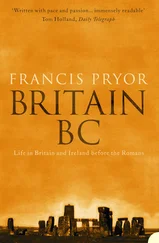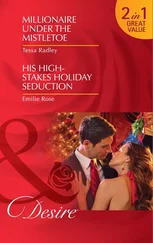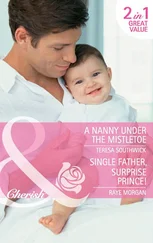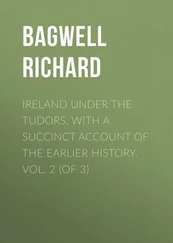Richard Bagwell - Ireland under the Tudors. Volume 3 (of 3)
Здесь есть возможность читать онлайн «Richard Bagwell - Ireland under the Tudors. Volume 3 (of 3)» — ознакомительный отрывок электронной книги совершенно бесплатно, а после прочтения отрывка купить полную версию. В некоторых случаях можно слушать аудио, скачать через торрент в формате fb2 и присутствует краткое содержание. Жанр: foreign_antique, foreign_prose, на английском языке. Описание произведения, (предисловие) а так же отзывы посетителей доступны на портале библиотеки ЛибКат.
- Название:Ireland under the Tudors. Volume 3 (of 3)
- Автор:
- Жанр:
- Год:неизвестен
- ISBN:нет данных
- Рейтинг книги:3 / 5. Голосов: 1
-
Избранное:Добавить в избранное
- Отзывы:
-
Ваша оценка:
- 60
- 1
- 2
- 3
- 4
- 5
Ireland under the Tudors. Volume 3 (of 3): краткое содержание, описание и аннотация
Предлагаем к чтению аннотацию, описание, краткое содержание или предисловие (зависит от того, что написал сам автор книги «Ireland under the Tudors. Volume 3 (of 3)»). Если вы не нашли необходимую информацию о книге — напишите в комментариях, мы постараемся отыскать её.
Ireland under the Tudors. Volume 3 (of 3) — читать онлайн ознакомительный отрывок
Ниже представлен текст книги, разбитый по страницам. Система сохранения места последней прочитанной страницы, позволяет с удобством читать онлайн бесплатно книгу «Ireland under the Tudors. Volume 3 (of 3)», без необходимости каждый раз заново искать на чём Вы остановились. Поставьте закладку, и сможете в любой момент перейти на страницу, на которой закончили чтение.
Интервал:
Закладка:
Far more important than the perennial but limited trouble with the Scots, was the question of surveying and resettling the attainted lands in Munster. In June 1584, a commission for the purpose was directed to Vice-Treasurer Wallop, Sir Valentine Browne a man of long experience in English revenue business, Surveyor-General Alford, and auditors Jenyson and Peyton. Their survey began early in September, and they did not return till the end of November, having found a great part of the province waste; and Kerry in particular seemed impossible to re-people except by importation from England. Sir Valentine Browne, who was an elderly man, was active and zealous, but he found the work very hard. ‘He hath,’ says his colleague the Vice-Treasurer, ‘been sundry times bogged, yet hath gone better through with it than might be imagined so corpulent a man of his years would have been able.’ Rivers and mountains had to be crossed, and provisions could hardly be procured at any point between Limerick and Dingle. One hundred persons fed at the Commissioners’ table, who had to supply it on credit. Wallop was struck by the great fertility of the land, and estimated that the Queen would have a new revenue of 6,000 l. within three years. But the difficulty in making an accurate survey was very great. It was supposed that land worth more than 1,000 l. a year had escheated in parts of Tipperary, outside of Ormonde’s jurisdiction; but what he had once claimed no one dared to inhabit in spite of him. The Earl’s palatinate was originally a matter of grace and favour, but he tried to extend it to the whole county, and it seemed doubtful whether any subject ought to be so great. The difficulty of arriving at the truth proved even more serious than Wallop at first supposed. Many months passed without anything being decided, and in the meantime Munster was in the utmost misery. Vice-President Norris could not prevent his starving soldiers from running after his brother into Flanders, and the towns, which truly pleaded poverty, could neither be forced nor persuaded to support them. 120 120 Wallop to Burghley, Sept. 17, 1584; to Walsingham, Oct. 14 and Dec. 4; Sir V. Browne to Burghley and Walsingham, Oct. 18; to Walsingham, Dec. 11; Waterhouse to Walsingham, Nov. 28; Lord Thomond to Burghley, July 14, 1585; Vice-President Norris to Perrott, Dec. 30, 1585.
Ormonde, who was in a hurry to get to London, deferred his journey that he might accompany Perrott to Ulster. The young Earl of Thomond, who had been educated in England, and who lived to be called ‘the great Earl,’ was glad to take part in the expedition. His great object was to have the county of Clare acknowledged as part of Munster, and freed from the jurisdiction of the Connaught government; and in this he ultimately succeeded. Clanricarde also gave his services, and so did Lord President Norris. Perrott had 2,000 trained men with him, besides Irish allies, and he thought they would all be necessary. It had been his intention to govern plausibly, and ‘to look through his fingers at Ulster as a fit receptacle for all the savage beasts of the land;’ but the Scots were said to be 4,000, and there were the usual reports about Spanish ships. Norris, who had a cooler head than Perrott, afterwards said that he thought the Scots were bent ‘only on their customary fetching of meat.’ They took 3,000 cows from Tyrconnell, but their numbers were larger than usual. Macleans, as well as MacDonnells, were engaged, and the whole movement had probably more to do with Hebridean politics than with any intention of hurting Queen Elizabeth. The Scots disappeared as quickly as they had come, and when Perrott reached Newry, he found that no foeman worthy of his steel awaited him. He resolved, however, to go on, and to show that Ulster was within his reach. 121 121 Fenton to Burghley, Aug. 19, 1584; Perrott to the Privy Council, Aug. 21; Bingham to Walsingham, Aug. 30; John Norris to Burghley, Oct. 16.
Secretary Davison was in Scotland at this time, and he ridiculed Perrott’s fear of Scottish invasion. The obscure politics of Isla and Cantire were not well understood even at Edinburgh, and the Englishman’s judgment may have been warped by the contempt which he certainly felt for Arran. The whole thing, he said, had been greatly exaggerated. But, notwithstanding his opinion and that of Norris, it seems clear that the uneasiness among the western clans had something to say to the fall of Gowrie, and to Arran’s short-lived triumph. The islanders would hardly move for king or regent, unless they saw some advantage to themselves. Some of them at least were paid by cattle taken from the O’Donnells, and all were willing to make interest at court if it could be done cheaply. Perrott’s ships just failed in intercepting the Scots at Lough Foyle, and he could only speak from report. ‘Yet truly,’ he maintained, ‘although they ran away thus cowardly, howsoever Mr. Davison was abused by his intelligence, they were in number little fewer, their training and furniture no worse, and their purpose no better, than I wrote.’ Tirlogh Luineach was not minded to oppose Perrott, and he came to him at Newry without pardon or protection. The old chief’s adhesion proved of little value, for, like other Irish leaders before and since, ‘the better subject he became, the weaker he waxed, and the less regarded of his followers.’ In fact he required help against his own people. But O’Cahan and the crafty Baron of Dungannon also came in, and Perrott proceeded to invest Dunluce Castle. 122 122 Walsingham to Hunsdon, Aug. 24, 1584, in Wright’s Elizabeth ; Privy Council to Perrott, Aug. 31; Perrott to Privy Council, Sept. 15.
The legal government of Scotland accepted no responsibility for the raids of Macleans and MacDonnells in Ulster. Formerly attempts to retaliate on the Hebrides had not been successful, though Perrott wished to repeat them; but James and Elizabeth were at peace, and the Queen was quite justified in treating the intruders as filibusters. Whether or not they were partly moved by Catholic intriguers in Mary Stuart’s interest really mattered very little, for they could not influence seriously the fate of creeds or kingdoms. But they were a constant source of expense, and the officer who dealt them a crushing blow would deserve well of his sovereign. This honour was, however, denied to Perrott, and reserved for Bingham. The Scot who commanded the garrison of Dunluce declared that he held the castle for the King of Scots’ use, and would defend it to the last. He can, however, have had no valid commission. The position of this place was at once its strength and its weakness. Situated on a precipitous rock rising out of a stormy sea, and connected with the mainland by a narrow ledge, it was almost unapproachable by any enemy. On the other hand it could scarcely be relieved, and it was impossible for the garrison to escape. The fire of three pieces converging on the small castle soon made it untenable, and the forty men whom it contained surrendered at discretion on the second or third day. 123 123 Perrott to Privy Council, Sept. 15 and 17.
Конец ознакомительного фрагмента.
Текст предоставлен ООО «ЛитРес».
Прочитайте эту книгу целиком, купив полную легальную версию на ЛитРес.
Читать дальшеИнтервал:
Закладка:
Похожие книги на «Ireland under the Tudors. Volume 3 (of 3)»
Представляем Вашему вниманию похожие книги на «Ireland under the Tudors. Volume 3 (of 3)» списком для выбора. Мы отобрали схожую по названию и смыслу литературу в надежде предоставить читателям больше вариантов отыскать новые, интересные, ещё непрочитанные произведения.
Обсуждение, отзывы о книге «Ireland under the Tudors. Volume 3 (of 3)» и просто собственные мнения читателей. Оставьте ваши комментарии, напишите, что Вы думаете о произведении, его смысле или главных героях. Укажите что конкретно понравилось, а что нет, и почему Вы так считаете.












